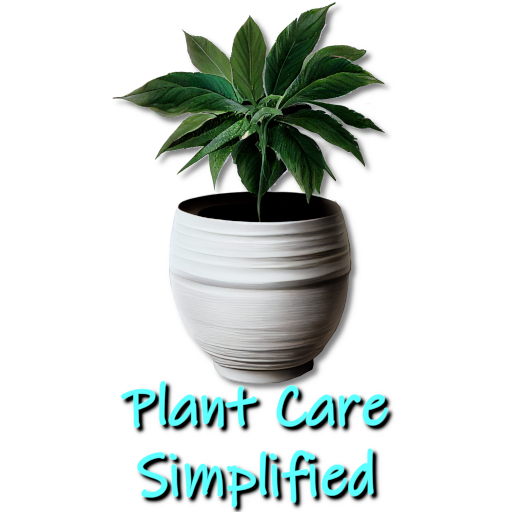How to Use LECA – Nutrient Stagnant Wick Method
Kim is passionate about helping people create beautiful, healthy indoor spaces that are filled with plants. Kim believes that plants make us happier, healthier human...
The nutrient stagnant wick method (wick method for short) uses LECA (expandable clay aggregate) as a stand-alone growing medium for your plants. It is a passive hydroponic system (semi-hydroponics) that is closer to true hydroponics in that it separates the nutrient solution from the growing medium but remains passive as there is no circulation on the solution.
The method is relatively simple. Although buying pre-configured pots designed for planting with the wick method is advisable, you can create your own. We will look at how to do this and provide a step-by-step guide to using the wick method with LECA.
Using LECA with The Nutrient Stagnant Wick Method
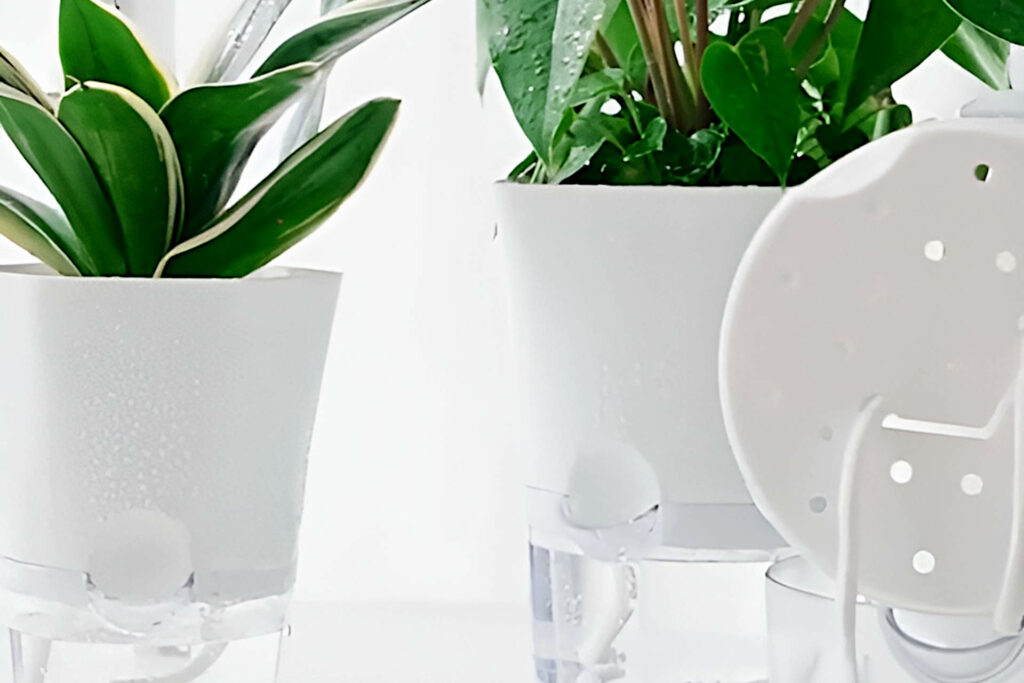
The wick method is one of several ways to use LECA as an alternative growing medium. It is a variation of the partially submerged nutrient stagnant method (partially submerged method for short). The difference between the two is the way the nutrient solution is handled and delivered to the plant. With the partially submerged process, the nutrient solution is added directly to the pot containing the plant, partially submerging the LECA balls up to the bottom of the plant's roots.
In contrast, with the wick method, the cord/wick draws the nutrient solution to the plant's roots from the reservoir using a sub-irrigated planter. The reservoir is a separate, self-contained compartment containing the nutrient solution, and it usually sits directly under the pot containing the plant and the clay aggregate.
The process works because capillary action draws up moisture and transports it to a plant's roots. However, when transitioning any plant to LECA, it is essential that the wicks are in contact with the root ball and ensure that the capillary action can get water to the roots. Gravity will intervene if the distance between the plant roots and the wick is too far.
Step-By-Step Guide to Using The Wick Method with LECA
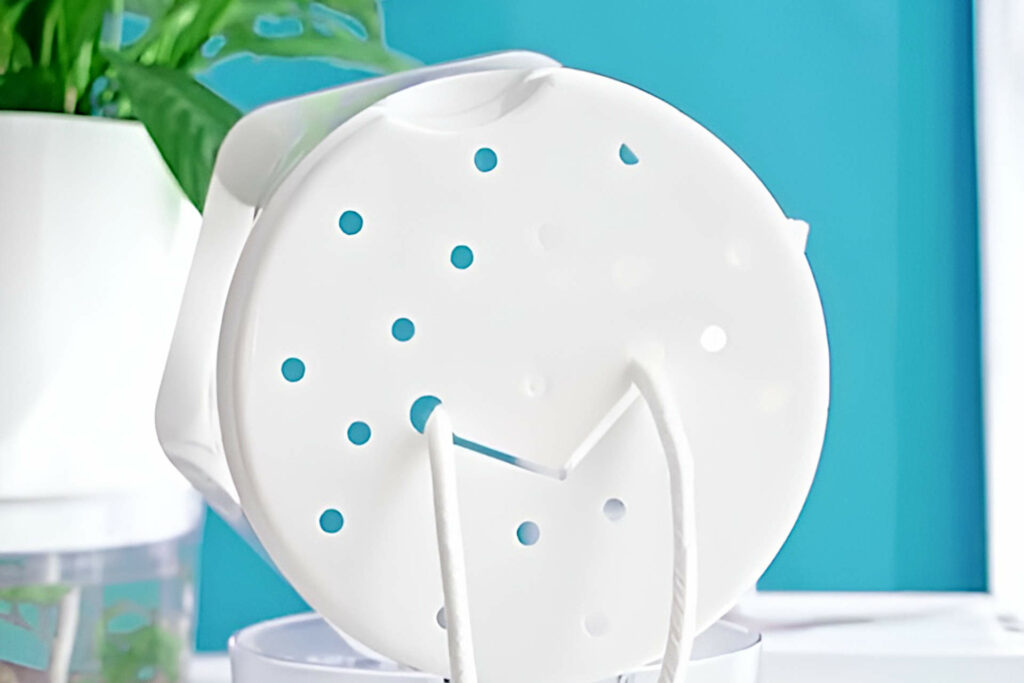
Step 1: Choose the LECA ball sizes you want to utilize. The most common dimensions range from 0.3 to 0.6" (approximately 8-16mm).
Step 2: Whether using new or reusing old LECA, ensure the clay aggregate is cleaned thoroughly before use. It is essential to remove impurities, dust, or loose particles from the LECA balls during the preparation process, which involves washing, soaking, and sometimes boiling the LECA balls.
Step 3: Make ready the necessary equipment needed:
- A new pot,
- reservoir compartment for the pot,
- the wicks that will connect the reservoir to the plant pot,
- a soft brush for cleaning the roots,
- sterilizing solution diluted hydrogen peroxide (or rubbing alcohol), and
- clippers.
Step 4: Prepare the nutrient solution you will add to the reservoir.
Step 5: Remove the plant from its current pot and wash the roots thoroughly, removing debris. Remove all the old potting soil with a soft brush before sterilizing the root with diluted hydrogen peroxide.
Step 6: Inspect the plant roots for rot root or dead roots. Sterilize the clippers with the diluted hydrogen peroxide solution and then prune.
Step 7: Connect the plant pot to the reservoir by pulling the wicks through the wick holes in the bottom of the plant pot.
Step 8: Now add the LECA balls to the new pot until the point where the base of the plant will coincide with the rim when you position the root ball. Make sure you don't bury the wicks. Pull them up through the clay aggregate and let them rest on top of this initial fill of LECA.
Step 9: Position your plant's root ball on top of this layer of LECA taking care not to damage any roots.
Step 10: Once positioned, carefully fill in the space around the roots until you reach just above the base of the plant, which should coincide with the lip of the pot.
Step 11: Add a solution of water and nutrients to the reservoir. The specific nutrients will be dependent upon the type of plant you have.
Advantages of The Wick Method
The Wick Method has a number of advantages over other methods of using LECA and over other growing mediums:
Water Efficiency
One of the primary advantages of this method is its water efficiency, which allows plants to make the most of the water they receive by reducing evaporation. Preventing evaporation is especially useful in arid or hot climates where evaporation is more likely to occur.
Better Root Development
Another advantage of the Nutrient Stagnant Wick Method is its ability to promote more profound and deeper root growth in plants. As plants are watered from below, their roots naturally gravitate towards the moisture, causing them to grow deeper in search of it. Deep roots should result in more robust and more resilient plants.
Better at Preventing Fungus Gnats
In addition to these benefits, the Nutrient Stagnant Wick Method can also aid in preventing fungus gnats. These pests are attracted to moist soil, but the dry surface of the LECA deters them from laying their eggs nut in particular, as the wick system is bottom-fed, the LECA at the surface is always dry.
Nutrient Retention
Finally, the Nutrient Stagnant Wick Method helps to retain nutrients in the soil or potting mixes by using LECA to hold onto soluble fertilizers that would otherwise wash away. Nutrient retention allows plants to grow more efficiently and effectively.
Where to Buy Pots for The Wick Method
The wick method requires a pot with two sections. The pot that will house the plant and clay aggregate growing medium, and the secondary compartment will hold the nutrient solution.
Posts designed for the wick method are readily available to but. Many garden centers and nurseries will stock them, although the design choice may be limited.
The best choice will likely come from online retailers like Amazon or craft platforms like Etsy. They are relatively inexpensive and the most practical way of utilizing the wick method as they will come complete with several wicks.
Making Your a Pot and Reservoir for The Wick Method
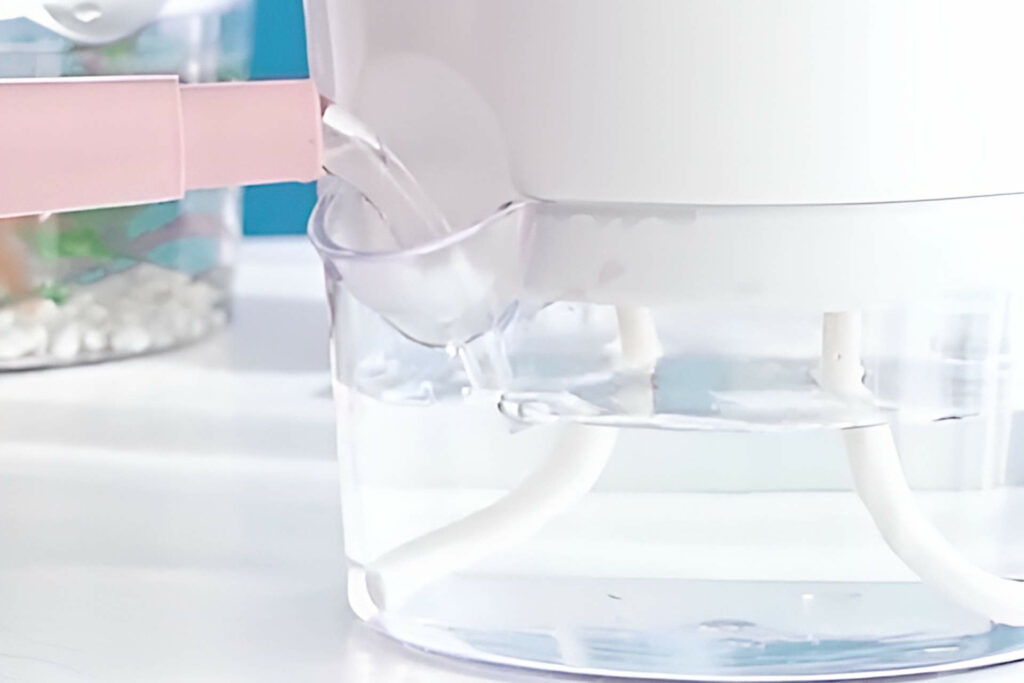
Of course, you can also make your own. Indeed it, in its simplest form, just takes a couple of pots and some rope or cord for the wicks.
The simplest way to create this configuration is to use a 'v-shaped' pot stacked inside a cylinder-shaped pot (or two 'v-shaped' pots). The cylinder-shaped pot will be the bottom pot and act as the reservoir. It will be smaller than the 'v-shaped' pot so that when the two pots are stacked, there will be a gap between the base of the 'v-shaped pot and the bottom of the cylinder pot. This gap will house the solution.
If the 'v-shaped' pot doesn't have holes in the base, you will have to drill or make them. The holes are so the wicks can pass through from the bottom pot containing the nutrient solution to the top pot.
Use rope or a material that will soak and absorb water for the cords that will be the wicks. They should be long enough so that you can lift the 'V-shaped' pot to replenish the nutrient solution when it runs low. When you add the solution, ensure the level is consistently below the base of the 'v-shaped pot when stacked.
Creating a Mini Aquaponics System
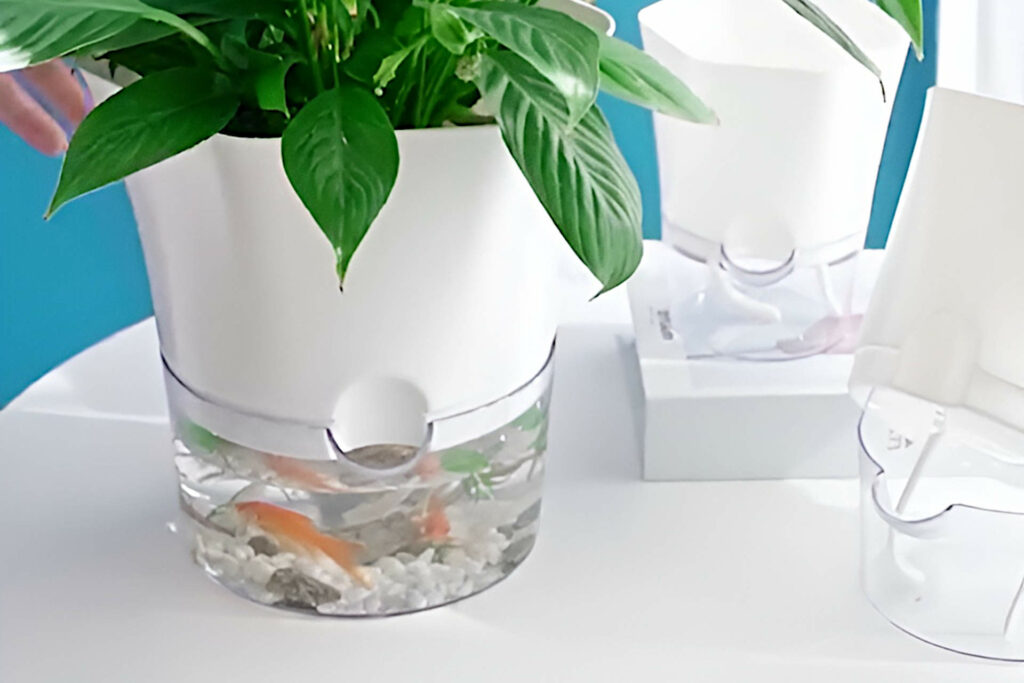
The wick method and expandable clay aggregate can be utilized in a min aquaponics system where you keep fish instead of adding a nutrient solution to the reservoir. The waste product of the fish will provide all the nutrients required for the plant and can provide an interesting aesthetic.
You would have to monitor the oxygen levels in the water and keep it aerated to ensure that the fish survived.
Kim is passionate about helping people create beautiful, healthy indoor spaces that are filled with plants. Kim believes that plants make us happier, healthier human beings, and she loves sharing her knowledge with others so they can experience the joys of plant care for themselves. <a href="https://plantcaresimplified.com/kim-marson/">Read more</a>
More Posts